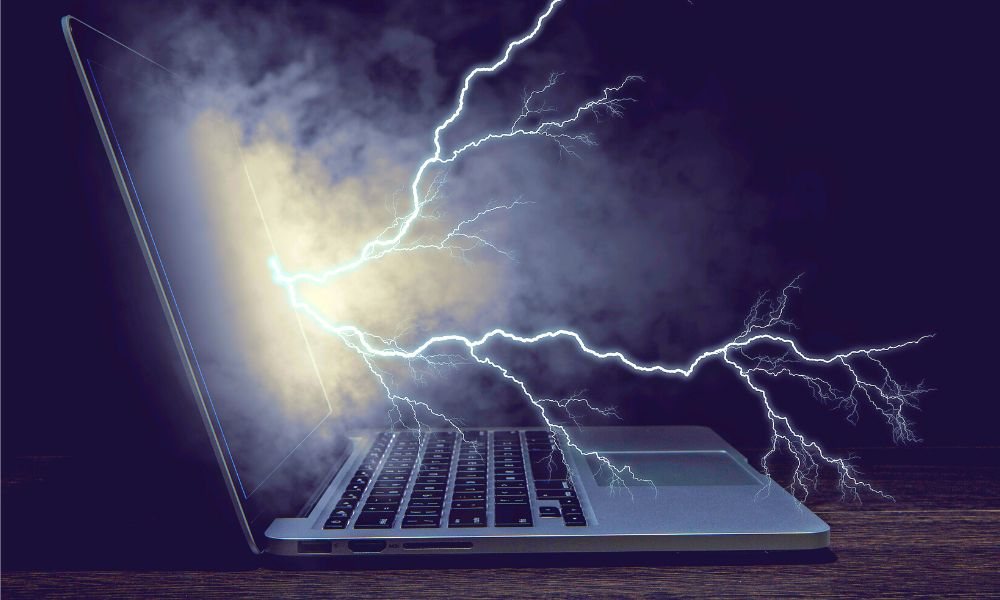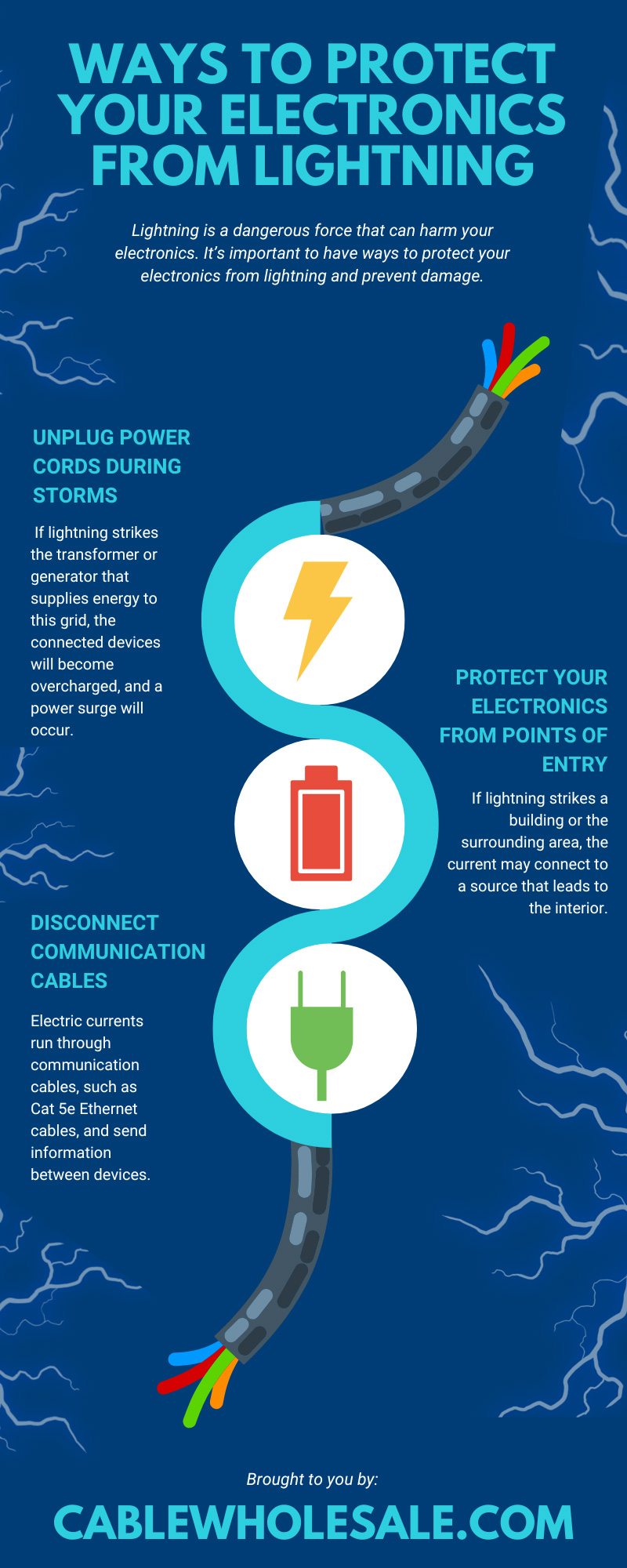
The weather is unpredictable at times, and dangerous conditions may affect electronics during storms. Lightning is often a threat that your electronics need protection from, and there are ways to prevent a lightning strike from destroying them. To learn some ways to protect your electronics from the force of lightning, read on.
How Lightning Threatens Electronics
Electronics have a limit to how much voltage they will withstand. The average refrigerator will have a maximum voltage limit below 250 V; if the voltage exceeds this amount, damage may occur inside the device. A single lightning bolt may transfer millions of volts to numerous devices, which will overcharge them and cause a power surge.
Power Surges
The devices connected to the electrical system of a home or building will feel the effects of a lightning strike that enters through points of the structure. Power surges are common during bad storms, and your devices will become overcharged if you aren’t careful.
The voltage running through the device can become too much to handle, and the resulting pressure will damage or destroy the devices connected to the system’s electrical source. Power surges may occur in small devices, like computers, or large devices, like walk-in coolers.
Ways To Protect Electronics From Lightning
While lightning remains a threat to devices, there are ways to defend your electronics from a power surge caused by a lightning strike. These methods are simple and won’t cost much, making them great options to protect your home or business from the damaging effects of lightning.
Unplug Power Cords During Storms
When your electronics plug into a wall outlet, they become connected to the electrical grid of that area. If lightning strikes the transformer or generator that supplies energy to this grid, the connected devices will become overcharged, and a power surge will occur.
Unplug as many power cables as possible to protect your electronics from lightning. Devices that require a consistent flow of electricity, such as refrigerators, freezers, or medical devices, must either remain plugged in or connect to a generator as a power source.
Anything that is battery-operated will rely on its energy source. There isn’t a guarantee that lightning will strike within your area and cause a surge, but it’s always wise to take precautions and unplug your devices.
Protect Your Electronics From Points of Entry
If lightning strikes a building or the surrounding area, the current may connect to a source that leads to the interior. Metal pipes and wires leading from a building are entry points for lightning and will lead to a power surge when lightning strikes them directly or in the nearby area.
Cover these entry points by changing the building layout. Ensuring pipes remain underground will decrease the chance of electricity passing along their lengths inside a building’s structure because the ground neutralizes the charge.
Power lines that supply energy to electronics in a certain area will have a grounded shield wire at the top of their towers to direct the lightning into the ground and prevent a surge. Use the same idea with your home or building—run a grounded shield wire from the roof into the ground to prevent the lightning’s current from getting inside.
Disconnect Communication Cables
Although larger sums of electricity pass through power cables into devices, lightning may pass through communication cables as well. Electric currents run through communication cables, such as Cat 5e Ethernet cables, and send information between devices. This ability to transfer electrical currents allows lightning to spread through these cables and affect connected devices.
For example, a laptop that isn’t connected to an electrical outlet but has an Ethernet cable connecting it to a LAN outlet might receive the shock from a lightning strike. When disconnecting power cables from outlets, unplug any network or bulk Ethernet cables connecting to the walls.
Equipment To Protect Electronics From Lightning
Knowing and using the ways to protect your electronics from the dangers of lightning are important. But for more protection, it’s important to utilize equipment built to handle lightning and keep you and your electronics safe. These tools will mitigate immense voltage or help your devices continue running despite the sudden charge.
Surge Protectors
Many people rely on surge protectors for safety against power surges that could start a fire or cause a blackout. When multiple devices need an outlet for energy, surge protectors offer numerous outlets that are safer than the average wall outlet.
The security of surge protectors comes from their ability to redirect a current into the ground wire of a building or home that will safely divert it into the ground. Surge protectors will prevent lightning from causing a power surge and keep connected devices functioning and unharmed.
Backup Generators
Sometimes, all your efforts to defend electronics against lightning may not work. But the millions of volts from a lightning strike won’t always spell disaster for your devices, and a backup generator is a helpful tool in recovering from a sudden surge.
Electronics have the ability to handle some instances of extreme energy surges and still function. However, if their power source becomes obsolete, you’ll need to rely on a backup generator to continue the flow of electricity.
Backup generators connect to the power grid of the home or building and will sense if there is a loss in electricity. The generator will activate and supply energy to the grid so devices connected to outlets will have an electrical current. These generators are valuable in storms with frequent lightning strikes, and you’ll feel more at ease with this technology available to help you through your time of power loss.
Service Entrance Surge Protector
If you want more coverage for your home and to prevent lightning from entering, a service entrance surge protector is your best bet. This type of surge protector is a device that diverts excess electricity to the ground, like a plug-in surge protector, but it will also protect hard-wired appliances.
A licensed electrician will install this surge protector between the electric meter and the electrical service panel. Use this device as an extra layer of protection that will double the effects of your current surge protector.
Lightning is a powerful force, and you need ways to counteract its immense energy. Protect your electronics using these methods and equipment so you won’t need to worry about a bad storm ruining your hardware.




